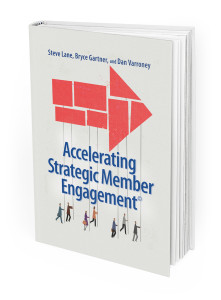In the aftermath of the great recession, growing conference attendance has become a herculean task. Tighter travel budgets, greater demand on executives’ time and more competitors are forcing Associations and Societies to modify the way they market conferences. What’s clear is organizations that use a multi-faceted marketing approach are meeting and in some cases exceeding forecasts.
Tougher Competition for Conference Dollars
In today’s world, a well-funded marketing strategy is a must for Association and Society conferences. Why? Sharper marketing by competitors will stifle attendance growth and limit an organization’s profitability and net operating revenue. Reflecting upon recent conference performance one Association Executive said, “It’s time to raise our game on the marketing front, we rely on conferences to fund new programs and initiatives.”
With higher stakes on conference attendance and profitability, it only makes sense to recruit outside expertise. In years past securing an outside public relations/marketing firm was viewed as a luxury, but not any longer, it’s becoming more of a necessity. Since outside public relations/marketing firms also compete for clients, they can be flexible in pricing. Associations and Societies can leverage negotiations and structure contracts in a win/win manner. Asking a firm to be a partner, and work for an agreed upon fee for service up front with generous incentives if attendance meets or exceeds budget could be attractive.
6 Ways To Boost Conference Attendance
A fully integrated marketing approach will set the stage for strong conference attendance. What matters most is that Associations and Societies utilize multiple platforms to proactively and aggressively reach target markets and achieve or exceed attendance targets:
1. Conference promotion. Provide: Conference Video, Save the Date Postcards, Sponsorship prospectus, brochures, advertisements. Update Website weekly with all materials.
2. Media engagement. Pitch reporters to attend and conduct interviews. Also, ask media to serve as panel moderators.
3. Extend reach. Implement a barter ad program, reach out to key publications and arrange advertising agreements for the media outlets to publicize conferences in exchange for attendance, booth and selective moderating roles at programs.
4. Ad placement. Secure print (local and national business journals) and online ads.
5. Affiliate marketing agreements. Send promotional emails to sponsor’s membership base, conference listing on affiliate sites, and exposure in their newsletters.
6. Target E Mail. Segmented direct mail, email. Purchase additional email addresses.
Added Sweetener
Conference registrants appreciate the ability to confirm networking meetings when they register. If your Association or Society offers this service, communicate it across all platforms. This capability is a “must have” and organizations that don’t have this capability should make the investment as soon as possible. In many cases, networking is a key reason why executives attend events. Adding this dimension to conferences will encourage more attendance.
6 Ways to Boost Conference Attendance
BackBay Communications was tasked with elevating awareness, attracting attendance and sponsorship for a financial conference in the height of the recession. Bill Haynes, the firm’s President, and his team developed and executed an integrated marketing campaign that covered the waterfront for their client. By driving powerful messaging through print and online advertising, direct mail, email, event marketing, affiliate marketing, website content, video and media relations, the conference attendance exceeded expectations and broke records.
Facebook Founder Mark Zuckerberg once noted “The biggest risk is not taking any risk…In a world that is changing really quickly, the only strategy that is guaranteed to fail is not taking risks.” Making the investment in an outside Public Relations/ Marketing Firm might look risky but it’s an investment worth making for Associations and Societies.
 For a free copy of the “Accelerating Strategic Member Engagement” eBook, request your copy at www.potomaccore.com.
For a free copy of the “Accelerating Strategic Member Engagement” eBook, request your copy at www.potomaccore.com.






